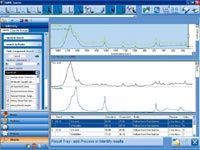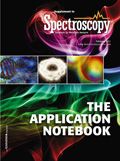Multicomponent Search and Advanced ATR Correction: Intelligent Tools for Rapid, Accurate Analysis of Kidney Stones with FT-IR
Kidney stones are complex, biological matrices often composed of mixtures of minerals and organic matter.
Stephen R. Lowry and Jeffrey Hirsch, Thermo Fisher Scientific
Kidney stones are complex, biological matrices often composed of mixtures of minerals and organic matter. In this study, we use FT-IR spectroscopy, an advanced ATR correction and a novel Multicomponent search algorithm to solve the problem of identifying all the components and their concentrations in kidney stone samples.
The chemical nature of a kidney stone can provide clues as to its formation. Fourier-transform infrared spectroscopy (FT-IR) is one of the critical techniques employed to identify the composition of kidney stones. Reference FT-IR spectra are available for many of the materials commonly found in stones such as calcium oxalate, CaC2O4, and calcium phosphate, Ca3 (PO4)2. In the majority of cases, however, a kidney stone is not composed of a single chemical species, but is a mixture of minerals and organics in varying concentration. Complex mixtures have traditionally been problematic with FT-IR database searching as prediction accuracy has been poor. In this case, the application of Thermo Scientific OMNIC Specta software's patented (US7698098) Multicomponent Search feature provides an accurate, rapid, and automated method for mixture searching with FT-IR spectra. We also created a small spectral library from spectra of the pure materials frequently found in kidney stones for subsequent use.

Figure 1: The result of the Multicomponent Search analysis on the kidney stone sample showing the corrected ATR mixture spectrum plotted with the calculated mixture spectrum (top), spectra of the known mixture components (middle), and the spectral match values and concentrations (bottom).
Experimental Conditions
Samples were run on a Thermo Scientific fourier-transform infrared spectrometer with a diamond composite attenuated total reflection (ATR) accessory for ease of sampling. The most common sample preparation for this application is grinding the sample with KBr powder and forming a pellet for transmission spectroscopy. In this study, spectra were acquired both on samples that were ground with KBr for transmission analysis and on neat ground sample with a diamond composite ATR accessory.
Results
The ease of data acquisition with ATR makes it an extremely attractive sampling technique. As is commonly found with matching ATR spectra to transmission spectra, however, the relative intensity of the peaks are different resulting in a lower spectral match value. A powerful feature of OMNIC™ Specta software is an advanced ATR correction that automatically and seamlessly corrects for natural variations in ATR spectra allowing accurate matching to the corresponding transmission spectrum. After correcting the ATR spectrum, the Multicomponent Search was used to find the best match. In this case, the sample spectrum was found to be a combination of 75.8% uric acid, C5H4N4O3, and 24.2% whewellite, a hydrated form of calcium oxalate, CaC2O4•H2O.
Conclusions
In this article, we have shown that high quality infrared spectra can be obtained from ground samples of kidney stones and that the advanced analysis features of the OMNIC Specta software can be employed to provide valuable information related to the chemical composition of kidney stones.

Thermo Fisher Scientific
5225-4 Verona Rd., Madison, WI 53711
tel. (800) 532-4752
Website: www.thermo.com

Real-Time Battery Health Tracking Using Fiber-Optic Sensors
April 9th 2025A new study by researchers from Palo Alto Research Center (PARC, a Xerox Company) and LG Chem Power presents a novel method for real-time battery monitoring using embedded fiber-optic sensors. This approach enhances state-of-charge (SOC) and state-of-health (SOH) estimations, potentially improving the efficiency and lifespan of lithium-ion batteries in electric vehicles (xEVs).